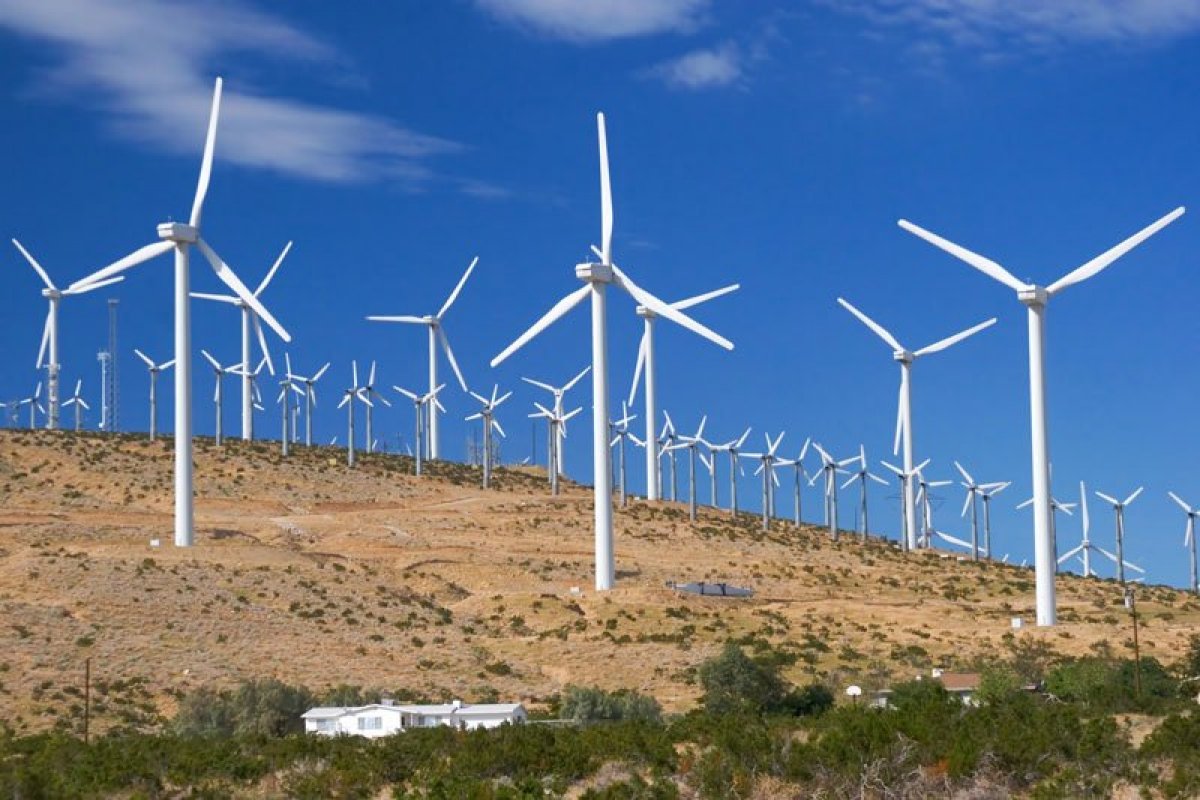Study: large wind power stations can heat up the soil, which affects climate

Alternative energy sources are becoming increasingly popular, with each year the number of solar power plants, wind farms, and geothermal stations is increasing. Many believe that the transition to green energy will help reduce the rate of climate warming, if you do not stop this process altogether.
But the fact is that the very sources of alternative energy also affect the climate. True, in order for this influence to become more or less monitored, there must be a lot of sources. Harvard scientists Lee Miller and David Kate decided to check what would happen if wind power stations become the main source of electricity, for example, in the United States.
For testing, a large-scale climate model of the continental United States was created. In regions where there are strong winds, scientists have placed a large number of wind power stations. The overall performance of this kind of energy source reached in the terawatt model. This covers all the country's energy needs.
')
The model showed that if a large number of wind power plants were built, it would get warmer in the continental US - the temperature would rise by about 0.2 Celsius. In regions where there are most stations, the temperature will increase by half a degree (meaning the annual average).
It is worth noting that the test results of the model coincide with the results of real measurements - where there are really a lot of stations, the temperature rises roughly as predicted by scientists.
Changes are more noticeable at night and less - during the day. The fact is that the surface of the earth heats up during the day under the influence of the Sun, and the influence of wind power plants is more difficult to track. But at night, when the ground cools, the changes are very noticeable - the average temperature of the soil in such regions is slightly higher than the temperature of the soil in the same climatic zone devoid of “wind turbines”.
Nevertheless, the changes are much less significant than those that we see now - the burning of combustible minerals and fuels affects the climate very much. Heating half a degree will hardly affect the ecosystems, nature will not be greatly affected. Of course, there will be some negative factors, but there are not so many of them, especially in the long term.
In addition, the changes referred to above do not spread globally - the temperature will rise slightly in a certain region, but not in the whole world.
As for global warming, it changes a lot - these are thousands and thousands of large and small changes in the temperature regime of all regions of the world, changes in precipitation and places of their fallout, and impact on ecosystems.
The Miller-Keith model analyzed climate change, including the effects of global warming, with most conventional energy sources being replaced with wind farms. As it turned out, if by 2080, replacing fuel combustion with wind farms, then global warming can be stopped. Of course, this is just a hypothetical scenario - scientists understand that it is unlikely to actually implement all this in practice. But still the research results are very revealing.
In addition, the model shows that wind power stations need to be built not only in the US - only in this case, global warming will stop. If wind turbines are installed only in the United States, global warming will continue to develop the offensive further, there will be no particular sense in replacing traditional sources with alternative energy.
As for the model, it should be studied more carefully in order to provide for different scenarios. For example, one can imagine that electricity produced on wind farms will be charged by electric cars, which will be replaced in their mass by ordinary cars. In this case, wind power plants will need more, which, in turn, will increase the negative impact of wind farms on climate.
It is worth noting that the model also provides an option when solar panels become the main source of energy. In this case, we are not talking about raising the temperature - the average annual temperature of the regions where there are most solar stations will rise by an average of 0.02, which is a vanishingly small value that does not affect anything. Solar panels have an impact on climate by changing the soil albedo - this figure increases significantly, which means it is a question of reducing the level of solar radiation falling on a certain region.
Nevertheless, scientists believe that the future belongs to wind power stations, of course, in those regions where the winds are strong enough. “Wind as a source of energy is much more beneficial than combustible minerals - including long-term environmental effects. And despite the fact that the influence of wind power stations on the environment is specific, it cannot be discounted, but must be studied, ”say the authors of the study.
Joule , 2018. DOI: 10.1016 / j.joule.2018.09.009
Source: https://habr.com/ru/post/426233/
All Articles